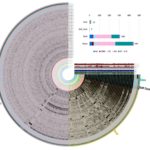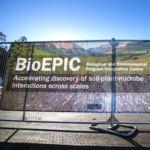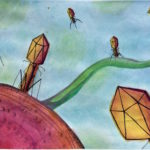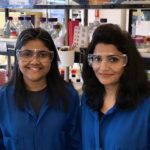Berkeley Lab Director Mike Witherell has appointed Paul Adams to the position of Associate Lab Director (ALD) for Biosciences. Adams has been serving as the interim ALD for the Biosciences Area since 2021, taking over for Mary Maxon, who is now with Schmidt Futures. Over the past two decades, Adams has played an important role promoting Berkeley Lab’s leadership in structural biology nationally and internationally. As ALD, Adams will continue to advance the Area’s scientific vision and operations excellence while advancing IDEA principles and broadening outreach to institutions serving groups that are underrepresented in STEM.
Small-scale Changes in Environment Can Have Large Effects on Microbial Communities
A Berkeley Lab team analyzed the genotypes and phenotypes of several Arthrobacter strains to correlate cellular functions to their location at varying depths within a single sediment core and in nearby groundwater. They found that Arthrobacter, as a genus, has remarkable flexibility in altering its suites of carbon degradation genes. This genomic variation was found to be linked to the individual strain’s environment and is the basis for Arthrobacter’s ability to break down a wide variety of complex carbon sources.
Breaking Ground on BioEPIC
On October 28, Berkeley Lab marked the groundbreaking for the Biological & Environmental Program Integration Center (BioEPIC), a next-generation facility for studying interactions among microbes, water, soil, and plants. The groundbreaking ceremony at the Bayview site included members of Berkeley Lab leadership, science groups involved with BioEPIC, site cleanup and construction groups, and the construction contractor.
Cataloging Nature’s Hidden Arsenal: Viruses that Infect Bacteria
Viruses that infect bacteria, or phages, are continually evolving ways to target and exploit their specific hosts. Their bacterial hosts, in turn, are continually evolving means to evade the phages. These perpetual battles for survival yield incredibly diverse molecular arsenals that researchers are itching to study, yet doing so can be tedious and labor-intensive.
A team led by Berkeley Lab scientists has developed an efficient and inexpensive new method to gain insight into these defensive strategies. They reported in PLOS Biology that a combination of three recently developed techniques can reveal which bacterial receptors phages exploit to infect the cell, as well as what cellular mechanisms the bacteria use to respond to a phage infection.
Using Tiny Organisms to Unlock Big Environmental Mysteries
Biosciences Area researchers have developed a new DNA analysis technique that reveals a very interesting, and previously hard-to-study, aspect of a microbial community’s genome. As described in the journal mBio, a team led by Aindrila Mukhopadhyay of the Biological Systems and Engineering (BSE) Division has optimized existing methods to isolate plasmids—the small packages of DNA that enable microorganisms like bacteria to quickly acquire and share genes. Often, these DNA molecules, which are separate from the chromosomes, encode functions that can confer a survival advantage in certain situations. The work was conducted as part of ENIGMA, in collaboration with groups at Oak Ridge Field Research Center and the DOE Systems Biology Knowledgebase (KBase). Read the press release in the Berkeley Lab News Center.
Was this page useful?








